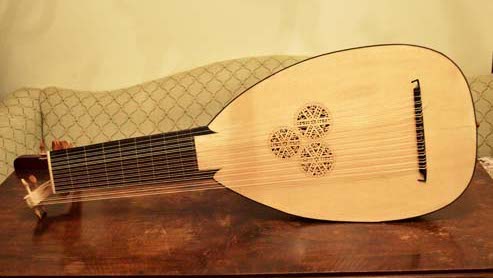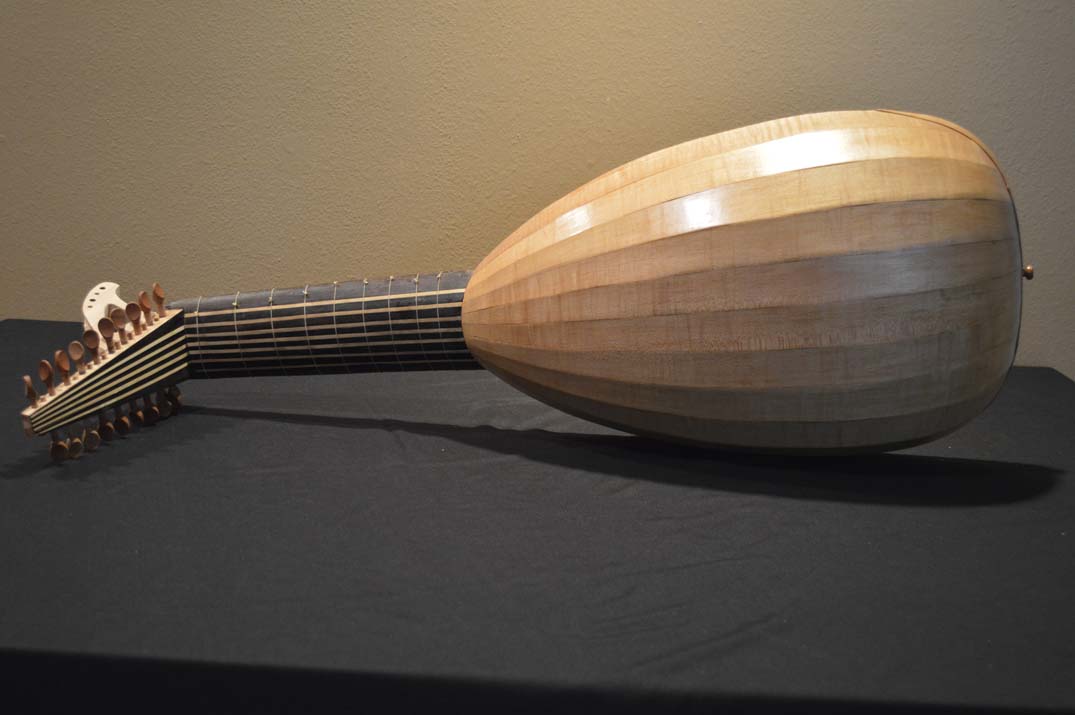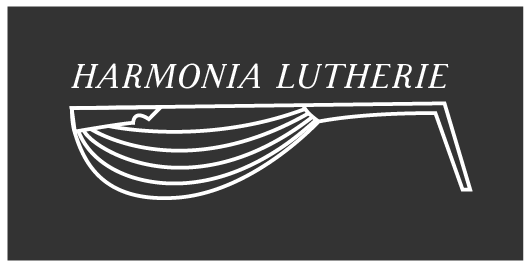
The Renaissance ten-course lute gave way to what is now known as the Baroque lute. A Baroque lute typically has eleven or thirteen courses and a completely different tuning than it’s Renaissance predecessor. The tuning for early baroque lutes varied with the period and the place. There was an eventual consensus on the d-minor tuning that most pieces were written in. These lutes have much larger bodies, and many other modifications to accomodate the increased number of strings.
During the Baroque period, there were two methods of creating a Baroque lute. One way was to make one from instruments built almost a century earlier, these were basically refurbished and repurposed bass lutes of the Renaissance. The bass lutes worked well due to their large bodies for accomodating more strings.
The other method was to build a completely new instrument from raw materials. You can tell the difference between these two methods by looking at the wood choices, decorations and how well all the pieces fit together proportionally. The newly built Baroque lutes were usually constructed from figured maple wood and spruce. The aesthetic was high contrast, usually black and white, stripes and elaborate decoration was a common theme.
A few of the more well known composers for this instrument are: J.S. Bach, S.L. Weiss and Bernhard Joachim Hagen.
I completed this 13-course lute in spring of 2017. The belly is european spruce and the ribs are Pacific Yew. The strings are gut and Nylgut from Aquila String Company.
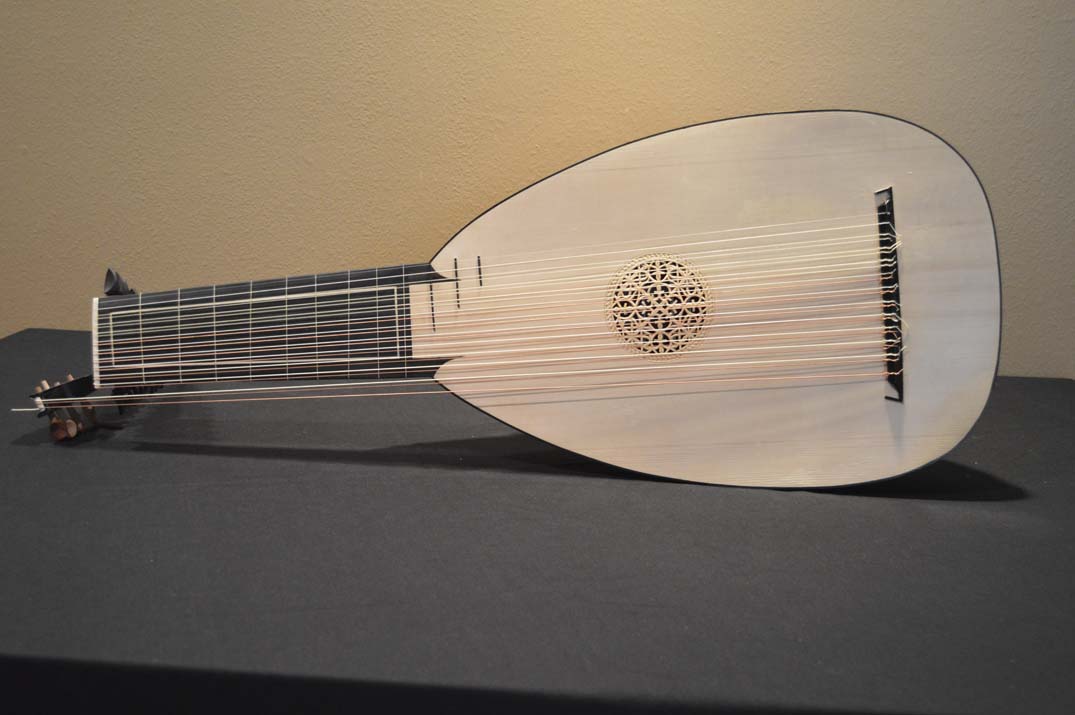
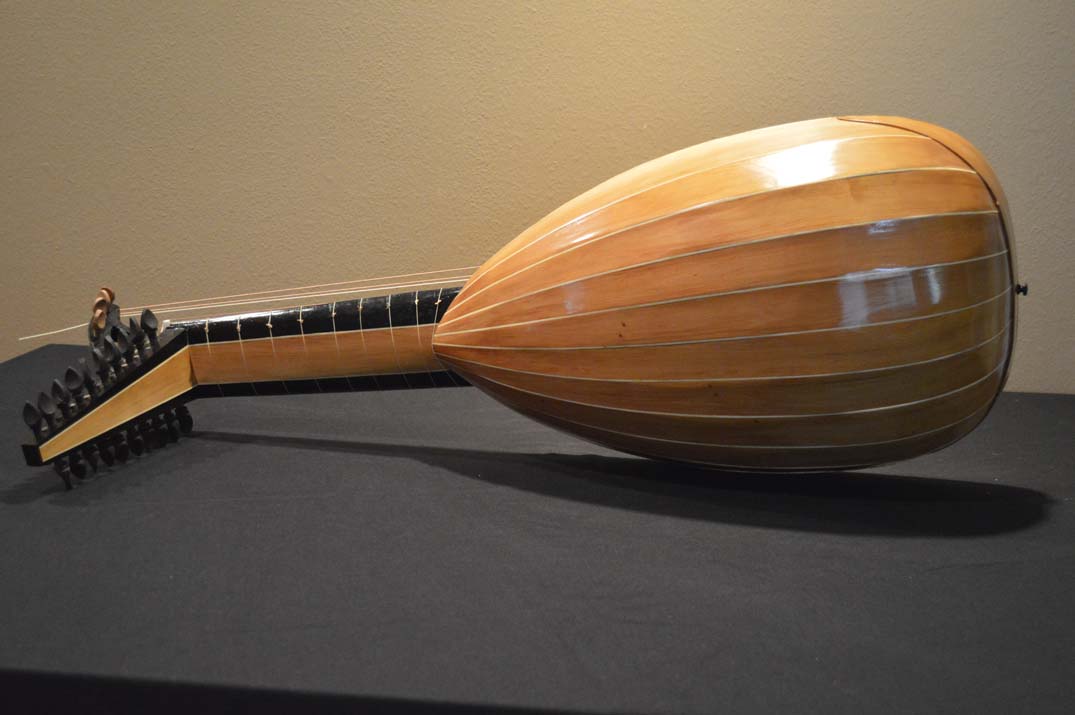
I completed this 13-course lute in spring of 2015. The belly is european spruce and the ribs are maple. The strings are Nylgut from Aquila String Company.
